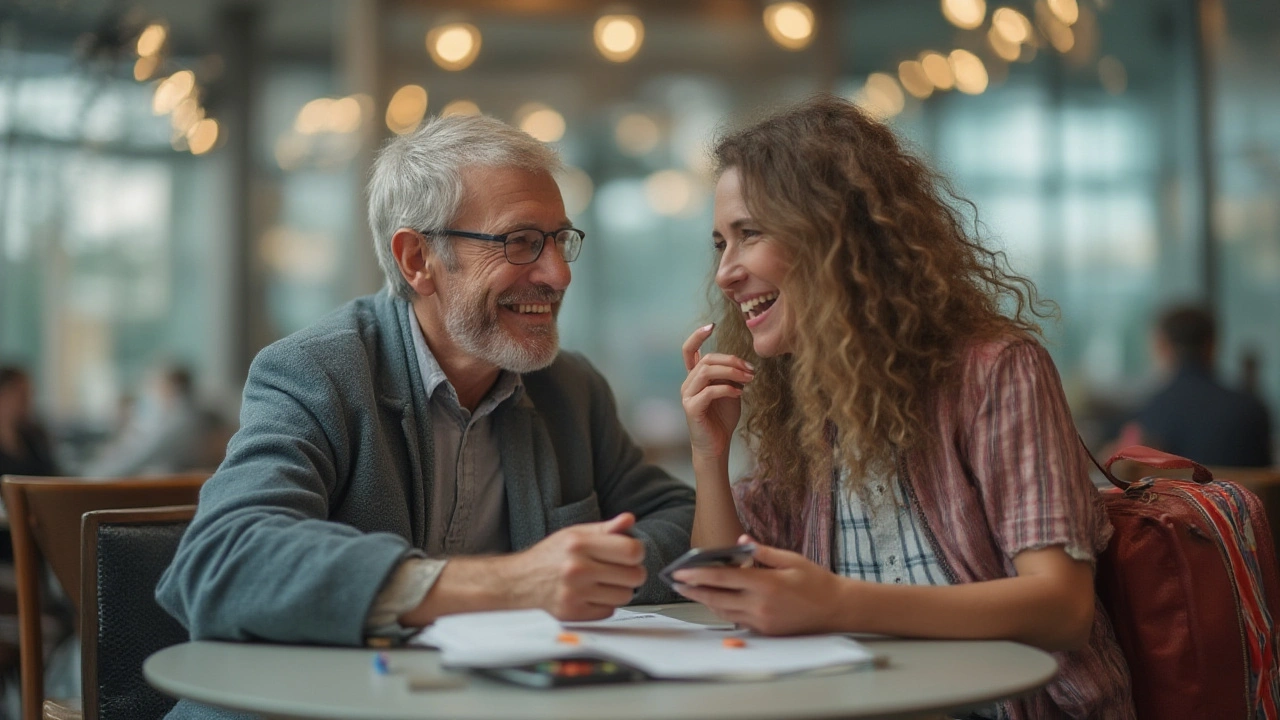Your passport’s ready, your suitcase is zipped—but if you’re taking Eliquis (apixaban), your travel checklist should look a little different than most. Cardiologists don’t get calls about sunscreen or the best airport snacks, but panic over blood thinners and missed doses is a regular on their phone lines, especially before summer or a big holiday. There’s a reason behind the anxiety, too: the stakes are high when your medication is keeping blood clots at bay. One off-schedule dose, and your carefully balanced system can tip the wrong way.
Common Questions Patients Ask Cardiologists Before Flying
Picture yourself rolling your carry-on down the jet bridge. You’re feeling pre-flight nerves, but there’s another worry brewing: when exactly do you take your Eliquis if your time zone is about to jump six hours? Do you pop it with your in-flight meal or hold off until you land? And, worst-case scenario, what if security snags your pills?
Cardiologists admit there are no dumb questions about air travel and Eliquis. Here are some of the specific worries they hear from travelers:
- "How do I adjust my dose for time changes?”
- “Is missing one dose really dangerous?”
- “Should I take extra pills in my carry-on? What if the airline loses my bag?”
- “Is it safe to go through airport security scanners with my medication?”
- “Can I skip breakfast or a meal and still take my medicine?”
- “When should I call a doctor on the go?”
Let’s bust some of these myths. According to cardiologists, the timing rule for Eliquis isn’t quite as strict as that fourth-grade teacher who’d mark you late for being two minutes off. You want to aim for roughly the same spacing between doses—about 12 hours for the standard twice-daily dose. If your flight messes up your schedule, you don’t need to lose sleep. Shift your dose by a couple of hours if you have to; just don’t double up doses or spread them too far apart. Missing a dose can up your risk of blood clots, so set a phone alarm or get your spouse or travel buddy to remind you. I always tell Alexandra to text me a reminder—because sometimes my brain is focused on Wilbur, my beagle, rather than my medication schedule.
Don’t stash all your pills in checked baggage, either. Always carry at least a week’s supply in your carry-on, plus your prescription (or a clear photo of it on your phone) in case customs wants proof. Airport X-ray machines won’t mess with Eliquis, but keep them in the original packaging with your name on it. If you’re prone to forgetting doses when your meal schedule shifts, stick your pills in with your snacks or use a pill box labeled with days. And if you accidentally skip a dose, take it as soon as you remember—unless it’s nearly time for your next scheduled dose, then just resume your regular timing. Never double up.
On that note, skipping food isn’t an issue with Eliquis. You don’t have to take it with meals, but plenty of people find that tying it to a regular routine—like breakfast or dinner—makes missed doses less likely. If jet lag or flight times throw everything off, that routine stays steady even when your body’s in a different time zone.

Trouble-Shooting Missed Doses and In-Flight Emergencies
Missing a dose of Eliquis can get your heart racing for all the wrong reasons. But before you panic, there’s a well-tested playbook. According to the American Heart Association, if you remember within six hours of your missed dose, take it—just don’t double up if you remember too late. People tend to overcompensate, but more isn’t better here; stacking doses can actually increase your risk of bleeding.
What’s more sinister is the ripple effect of a missed dose on a long-haul flight. Sitting for hours in your cramped economy seat? That’s a recipe for deep vein thrombosis (DVT), especially for those already fighting clotting issues. This is why the basics of in-air self-care become even more critical if you’re on Eliquis. Every couple of hours, get up, stretch your legs, circle your ankles, and march in place a bit if you can snag some extra aisle space. Hydrate like crazy, but skip alcohol and too much caffeine—they can leave you dehydrated, which isn’t great for your circulation.
Don’t ignore weird new symptoms. Shortness of breath, chest pain, swelling in your legs, or sudden headaches need to be reported to the flight crew and checked immediately on landing. It’s rare, but flying puts you at unique risk for both clots and, if you’ve taken too much Eliquis, bleeding.
Before you even leave home, stash your cardiologist’s contact info and the name/strength of your medication somewhere easy to find—Alexandra and I always jokingly say our “medical passport” is on our phones, just in case. Have insurance info handy too, so if you run into trouble overseas, you don’t waste precious time hunting through email attachments or panicking over insurance translations.
- Carry at least a week’s supply of medication in your hand luggage.
- Keep medications in original packaging with your name and prescription details visible.
- Set medication alarms or travel reminders on your phone or smartwatch.
- If you use a medical ID bracelet, update it with your current medication and dosage.
- Before you travel, talk through your flight times and new time zone schedules with your doctor—they may offer a custom plan.
- Hydrate often, avoid alcohol, and try to move on long flights to lower DVT risk.
Take a quick detour for extra reading—if you want stories, checklists, and a full breakdown of air travel best practices (including stuff most people forget), check out these apixaban travel tips from patients and pharmacists who’ve logged enough air miles to teach a masterclass at the airport.

How To Smartly Manage Your Eliquis Schedule Across Time Zones
All those little digital clocks in the airport lie—they make it look so easy to “switch” time zones. But your body and your prescriptions aren’t that flexible. Here’s what actual cardiologists recommend: plan ahead, map your flights, and decide if you’ll adjust the dose time slowly (by moving it an hour earlier or later over a few days), or just pick a new schedule when you land. There’s no single universal answer, so your doctor’s advice is gold here. For a short trip, you might just stick to your home-time dose; for longer stays, ease into the new local time within a day or two.
Get comfortable with digital help. Pharmacy apps are your friend—they remind you when to take a dose. A lot of airlines offer travel apps that also help you keep a basic schedule (or pair up your calendar invites with a med-alert). Be honest with yourself: are you likely to drift off and forget your evening dose while binge-watching in-flight movies? Then make your spouse or a travel companion the “dose captain.” I can’t count how many times Alexandra gently thumped my arm right before a layover, just to say, “Did you take your pill yet?”
Don’t be afraid to overprepare. Traveling can be distracting, but you’ve got enough tools: reusable pill organizers with AM/PM slots, waterproof pill pouches, and those sticky reminder notes that you plaster right on your phone case. Keep your prescription and a short letter from your doctor explaining your need for Eliquis—especially helpful in countries where customs can be strict about medications.
If you get stuck somewhere with no pills—lost luggage, a delay that keeps you overnight—ask a local pharmacy if they can fill a short-term prescription using your doctor’s note or medical records. Most major cities will have a pharmacy familiar with Eliquis, but don’t bet everything on that—carry spares.
You don’t need to take Eliquis at the exact same time every day, but you want a regular rhythm. If you switch between time zones, keep dosing as close to a 12-hour interval as practical. If you travel east, your day gets shorter, so try to stretch to the next local dose, but don’t let it go more than 16 hours. If you travel west (gaining hours), your day gets longer, so split the difference and repeat your dose closer to the usual interval, but never sooner than 8 hours apart. This advice isn’t about obsessing over clocks, it’s about keeping your blood as safe as possible while you adventure.
No matter what, you want to avoid both doubling up and skipping large gaps. The consequences aren’t worth the gamble. If you miss two doses or more, call your doctor or reach out online—not every situation needs emergency help, but it’s worth expert input.
It’s easy for doctors to say “stick to your schedule” when they’re in the same office all day. Air travel on Eliquis doesn’t mean living by the stopwatch; it means knowing the rules, planning ahead, and using every resource (tech, friends, and your own routine) to stay healthy. The best trips are the ones with the right balance: safety and a little flexibility. That way, when you’re checking your pulse at 40,000 feet, it’s because of excitement, not anxiety about your next dose.

